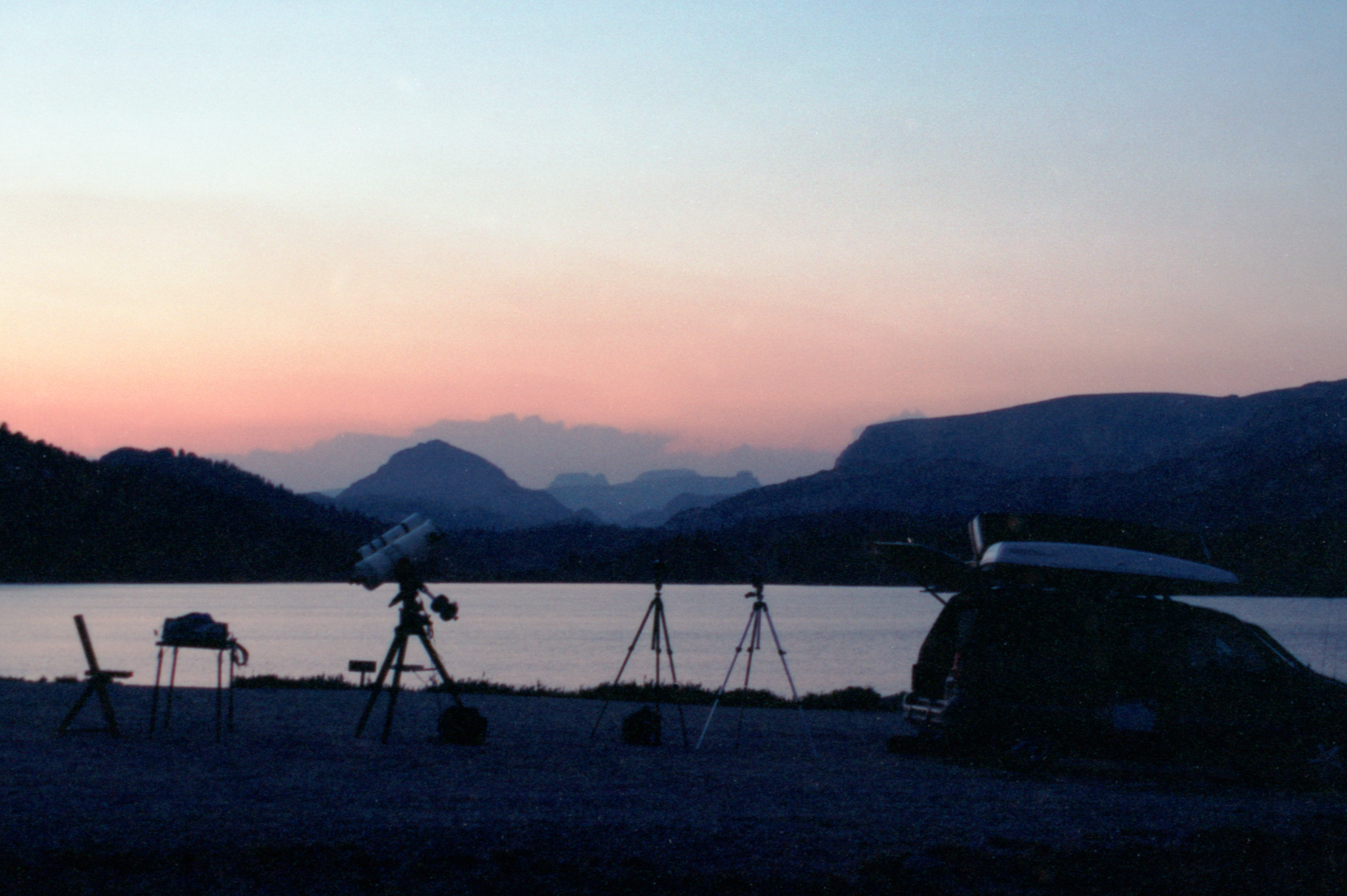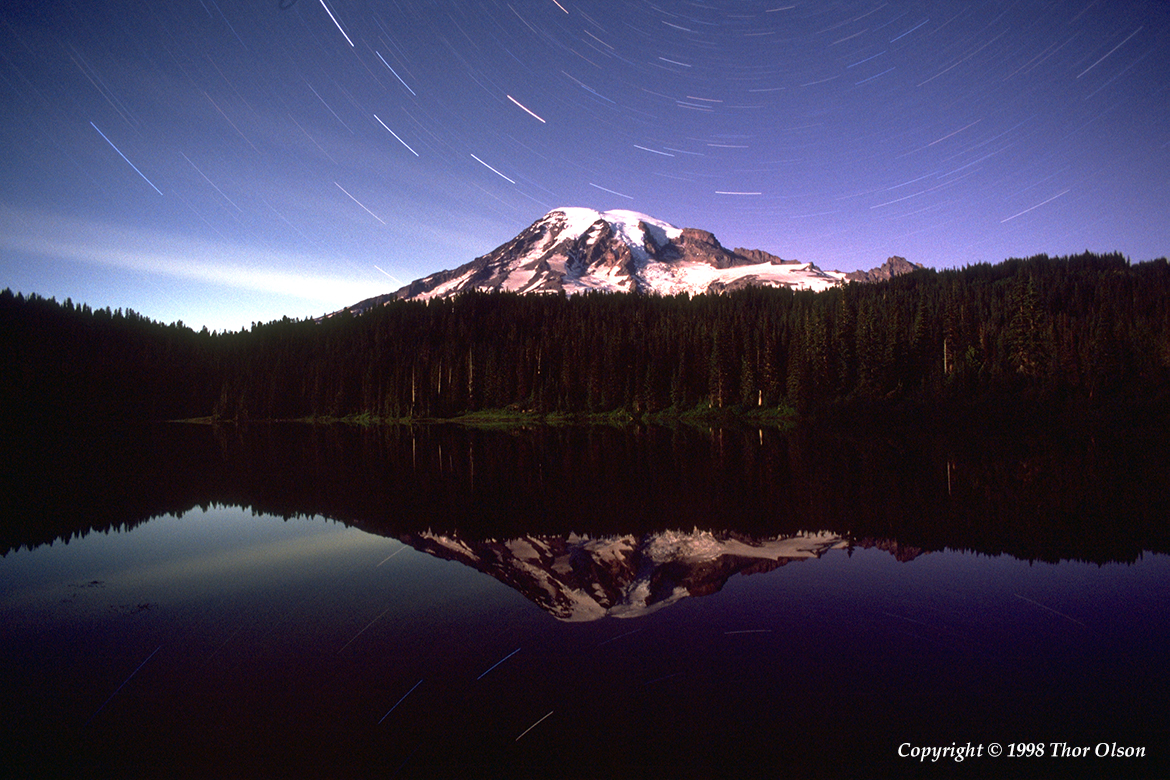I have cameras to load with film, attach to tripods and then find compositionally interesting locations to place them. The winds are dying, and the lake is approaching that mirror finish that will show stars beneath the depths of its reflecting surface. The conditions are right, but there is yet one more requirement: I need to be able to find a patch of dry land to plant the feet of a tripod that still allows me to compose a view that contains the sky, the horizon, and enough of the reflecting lake to capture the spirit of this place, the recollection of a distant experience. I find that in spite of my wide-angle lenses and film formats, I cannot get enough of the scene in the viewfinder to satisfy me. I make some guesses about how the stars will move over the next few hours and arrange the cameras at the edge of the lake.
There is an interesting tradeoff in making this exacting picture. The height of the camera above the lake’s surface is very important. Imagine if it were at the actual level of the water. The view of the mirror would be very oblique. This is good for the reflected light from a faint star in reaching the film- a glancing reflection from any polished surface is nearly 100 percent, but the perspective would foreshorten the lake to nearly nothing, and if there was any view at all, it would be a reflection of the sky at the horizon, usually a murky soup of air and distant lights.
To get a larger view of the reflection, the camera must be above the lake’s surface. As one increases the height, the area of reflected sky increases, showing the stars that are higher and higher above the horizon. But as the angle increases, the reflected energy decreases, until a point where only the brightest stars can make any impression on the film that is recording it. There is perhaps an optimal camera height for obtaining a pleasing composition that contains startrail reflections. I do not know what it is, but I will be able to perform another experiment tonight in my ongoing efforts to find it!


